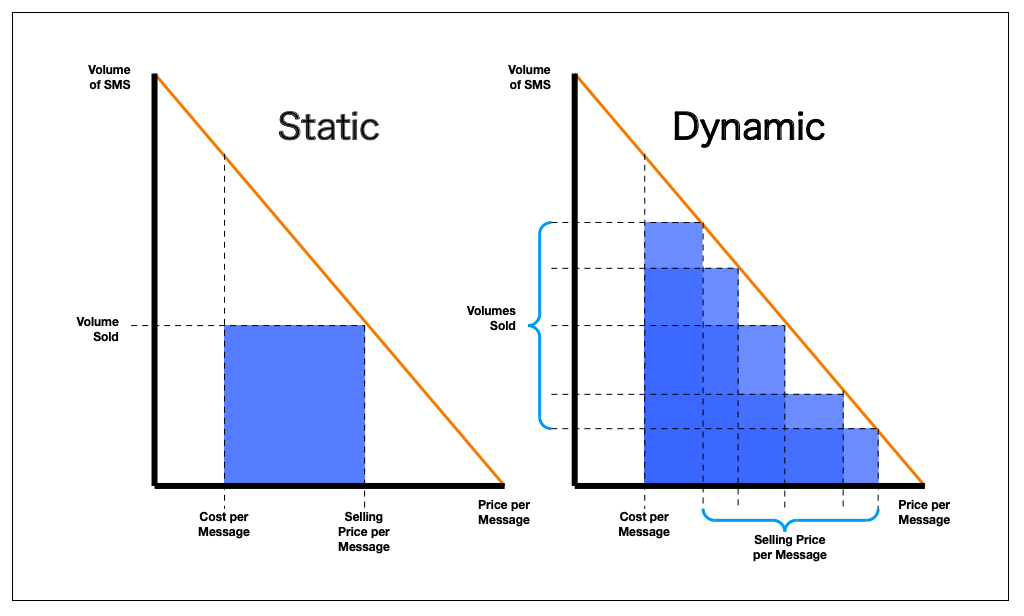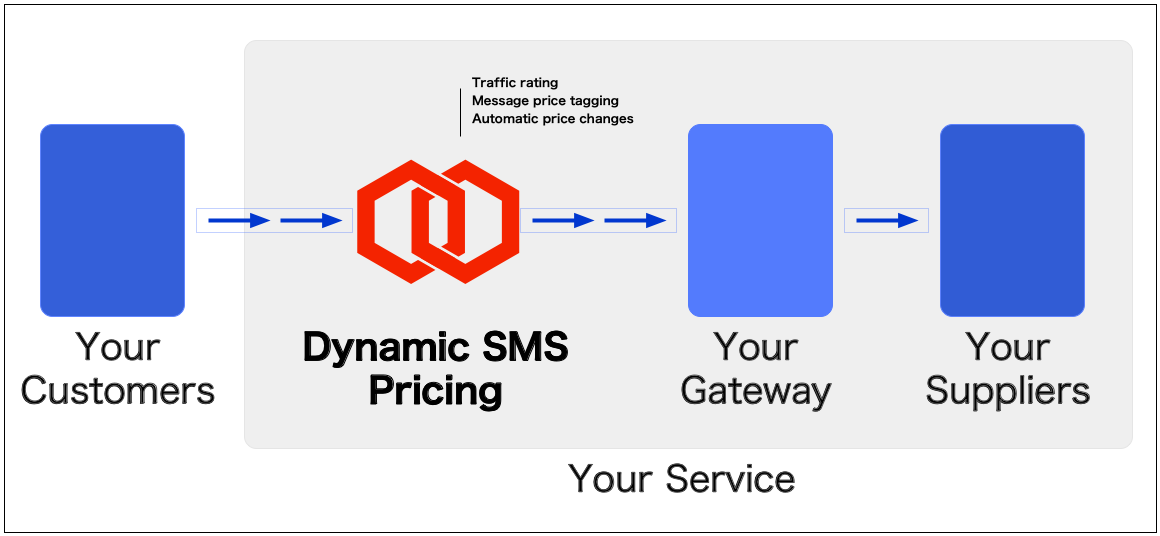Dynamic SMS Pricing
Drive revenue through the flexibility of your pricing, traffic rating and billing.

Rigid and standard pricing strategies will not maximise the profit available to SMS messaging aggregators and other messaging providers. Dynamic SMS pricing aims to create more opportunity to maximise profit through the automation of pricing, differentiation of traffic and realtime traffic rating.
The objective of dynamic SMS pricing is to achieve higher profits. This can be accomplished by selling more SMS, with volumes of SMS being priced at different rates. The diagram here illustrates this, with the orange line for comparison purposes only.
Our systems can rate traffic in realtime based on a number of factors, tag each message with its price before passing to your systems, automatically change pricing in realtime and issue price notifications to customers. The automation of pricing and traffic rating, within the limits imposed by the client, can deliver increased profits.

Dynamic SMS Pricing Strategies
The main dynamic pricing strategies that can be applied to SMS are described below. Multiple strategies can be employed when setting the pricing of SMS.
Segmented Pricing
Features a pricing strategy that offers different pricing for different customers. High-value customers might be offered prices that are higher because they are willing to pay more for a faster or higher quality service.
Peak Pricing
Used to charge more for the use of services that take place during peak hours. SMS text message notifications that need to be sent out first thing in the morning could cost 25% more between 7 and 10 AM.
Time Based Pricing
Charge more for immediate service. A lower SMS price can be charged for customers who submit messages for delivery to take place in 4 hours time (scheduled delivery), however a higher price for customers that require immediate delivery.
Penetration Pricing
Involves setting the initial price of SMS below normal market level in order to drive demand. The low price is designed to reach a large portion of the market but can also be used to increase market share.
Changing Conditions
Involves using a strategy to boost profits when the conditions of the market are changing. For example, when the market opportunity has only a short window of time. This works by lowering the price as SMS volumes begin to fall and then raising the prices back up again.

Service snapshot
- Charge based on time of day, day of week, day of month, week of month
- Charge based on characteristics of the SMS message (concatenated, scheduled delivery, non-standard message parameters, type of source address, receipt requested)
- Realtime algorithm-controlled charging, e.g. charge based on current demand
- Receive detailed billing data for each customer
- Manage customer pricing and send pricing notifications
